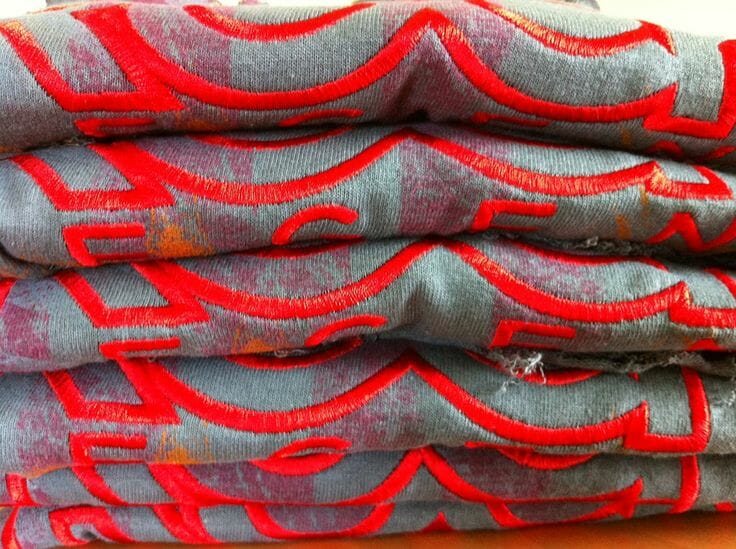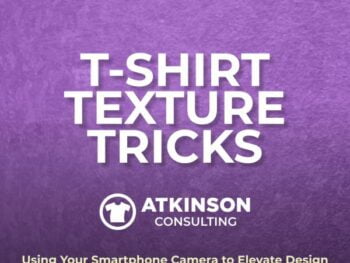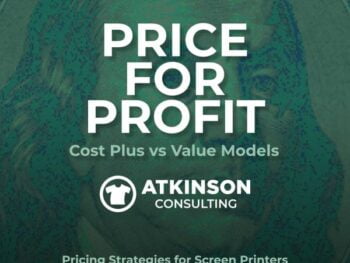The one thing that all t-shirt print shops around the globe share is that at least once a week, there’s a random person strolling into the office with “the greatest idea ever” for starting their own apparel line. Usually they haven’t put much thought into it at all, and they are just armed with some scribbles for an idea and a lot of nervous energy as the mountain of questions start. Just about every one of these folks will fail at their new “business”, and are usually stuck with cases of shirts in their living room that even their grandmother won’t want.
Even if they had a great idea, they are doomed from the start as they didn’t do some basic homework first to understand what they were getting into. If there is one notion you want to understand completely before you leap off the high diving board, and that is how big and deep the pool underneath will be. Don’t just launch yourself and hope that you will make it.
Below are the 9 tips that can set you up for a better chance of success. Starting your own apparel brand from your kitchen table or work break room with your friends? Use these to prepare, develop and position the idea for success.
Write a real business plan. Before you spend any money with a screen-printer, designer or trademark attorney, do your homework first and write a business plan. This is going to involve researching the industry from the supply chain, to distribution, to how you are going to market your idea. Who is your competition? What cost factors influence manufacturing your line? Can you design your own images, and if not, what does a great designer cost? How are you going to sell your shirts? Usually it’s either to a store or on a website. What are the challenges in selling on both of those platforms? How are you going to overcome them?
Understand your production costs. Printing a t-shirt sounds very simple on the face of it. However, it can get complex quickly the more locations and ink colors that are added to the design. Make sure you talk to a few screen-printers and understand their cost structure before you start designing. Get written price lists that you can use. Most apparel lines sell for the same price, regardless if they are on a website or hanging on a rack in a store. There’s a big difference in cost though between a one color full front and a six color full front design. This means that you’ll make less money per shirt if you use more ink colors. The more print locations and ink colors you add to your shirt design, the more it will cost to produce. This is critical information to have before you start designing your apparel line, as you need to work out the cost structure before you develop your creative ideas.
Success is 50/50. The best apparel lines are very choosy about what garment to use for their lines. Color, style, cut, fit, hand are all critical factors. Half of the buying decision for the consumer is based on the shirt. Let’s face it, how many times have you liked a particular shirt only to not buy it because it was in the wrong color, or you didn’t like the style or cut of the shirt? Maybe you loved the design, but just wished it came in other choices. The most popular t-shirt colors used are black, white, and some sort of gray (ash, light steel, oxford, charcoal, etc.)…in that order. These shirt colors look good on anybody and are the basic lowest common denominator for color choices. Once you start throwing other colors into the mix, then there usually is a reason behind that color selection. It’s a team color, or color associated with the theme of the design. Make sure you pair your shirt design with an appropriate shirt color and style. Know, like the back of your hand, what your target demographic prefers. Absolutely don’t choose what you like, but rather what your customers like. There sometimes is a huge difference.
Design, it’s crucial. Unless you are a good designer, it’s vitally important that you spend some time (and money) choosing the best designer for needs. Yes, your next door neighbor kid just finished one semester of design school so he can probably do it…but is that really the best choice for your needs? Don’t cheap out. Although you may not know them personally, there are many extremely skilled and creative apparel designers that can help you. There is a big difference between someone that can design a t-shirt, and someone that can design a t-shirt that can make someone walk across a store, grab a shirt off the rack and scream “I gotta have this!” Are you sure you want to go with the “save a buck” plan?
Don’t rip-off others. Thinking of taking someone else’s logo or idea and changing it so you can sell it as your own? That’s not only unethical and illegal, but just plain lazy. I’m sure if you scour the internet long enough you can find tons of comments about how changing someone’s logo or art 20% or whatever, constitutes that it’s enough to get by legally. However, that isn’t going to stop someone from suing you. What is twenty percent of an image anyway? My take on it has been to always try to shoot for the high road and just design something unique. If you don’t have something unique to present to the market, then it’s time to go back to the drawing board until you do. Having the balls to rework someone else’s idea into your own doesn’t make you a good business-person; it just makes you a scumbag.
Should you change out the neck labels? The answer is yes, definitely. Of all the lines that make it, the neck tags are always removed and something else is sewn, heat pressed or printed to replace them. This makes your idea appear to be bigger than it actually may be, and lends gravitas to your idea. It’s not really that expensive, and if you add in a website to the information, can even be good marketing to your endeavor. Starting out, using heat press transfer labels is going to be the most economical method, as these can be manufactured by the same printer that is helping with the rest of the order. When making them, print up a few sheets more than you need and just keep them ready. Once orders start rolling in you can move to using woven labels later.
Get some samples printed & pay for them. Trying to test out your line or selling it to shops? Working with your printer, print sell samples and use these to gain traction for your line. Absolutely pay for these, and don’t try to work the price down to the printer with the plea “Can you help on the price? This line is going to be huge?” Actually, we hear this at least once a week, and honestly, it’s not going to be huge. There is a tremendous amount of effort, and a little bit of luck, that goes into making your idea work and getting it into stores. Samples are basically prototypes, and there is going to be some developmental costs with these. Remember, this is a business. Work your sample costs into your business plan.
Remember, your printer wants the print business. When showing the idea for the first time, most people say “What do you think?” Every printer out there is going to say, “Hey that’s great, let’s get going.” A few may start talking about how talented their art department is, which always is code for: “Your art sucks, maybe we can help.” If you really want an honest opinion about your print line, find people that don’t know you. Nobody wants to disappoint their friend, or make a potential customer angry. Before you print a bunch of shirts that might not sell, show a mock up to as many people as you can. The fancy term for this is called a market survey. Companies use these to gauge interest and tweak products before releasing them into the marketplace.
Treat your supply chain right. Your lifelines for success are the people and companies that are helping you. The best advice I can give you is to remember to pay them. People don’t work for free, and you can’t cash promises. Want to be a success? Make sure you are compensating the ones that are going to get you to the finish line. This includes your design team, who usually gets stiffed.
People strike gold all the time from their kitchen table, building up a side business into a lucrative apparel line. A gazillion others, crash and burn for the same amount of reasons. If you are serious about starting your own line, and not just consigned to sell twenty shirts to your beer swilling buddies; then you should treat the venture like any other business start-up and think it through. Do your homework and understand everything before you start spending any money. Although there is no guarantee for success, the ones that have laid a firm foundation generally are the ones that come out ahead in the end.



9 comments
zojahappy
Reblogged this on ZOJA:HAPPY.
Marie Mayotte
This is something we should print out and hand to those who wander in with the next “Life is Good.”
atkinsontshirt
Marie:
Thanks for reading & commenting!! It’s amazing how as decorators we all see the same things sometimes… -M
Marie
Just had a customer pick up 96 shirts; 24 each of four different designs. He’s starting a line of Christian t-shirts. The “designs” are text-only (non-serif block font), one- or two-color imprints on white shirts. He’s the perfect example of someone who would’ve benefitted from the info in your article.
atkinsontshirt
Marie: That’s great!! Thanks for sharing. -M
ryan
Must read,helps a lot..and must Share Thanks AtkinsonTeam,Cheers from PH
Arrowest Custom T-Shirts
Marshall, I been in the screen printing business for over 35 years and this information is so true. Thank You For sharing. God Bless ! Michael Parks / Arrowest Custom T-Shirts. email@arrowestsportswear.com.
atkinsontshirt
Thanks!!
atkinsontshirt
Ryan – Thanks for reading and commenting!! I appreciate the support!! -M